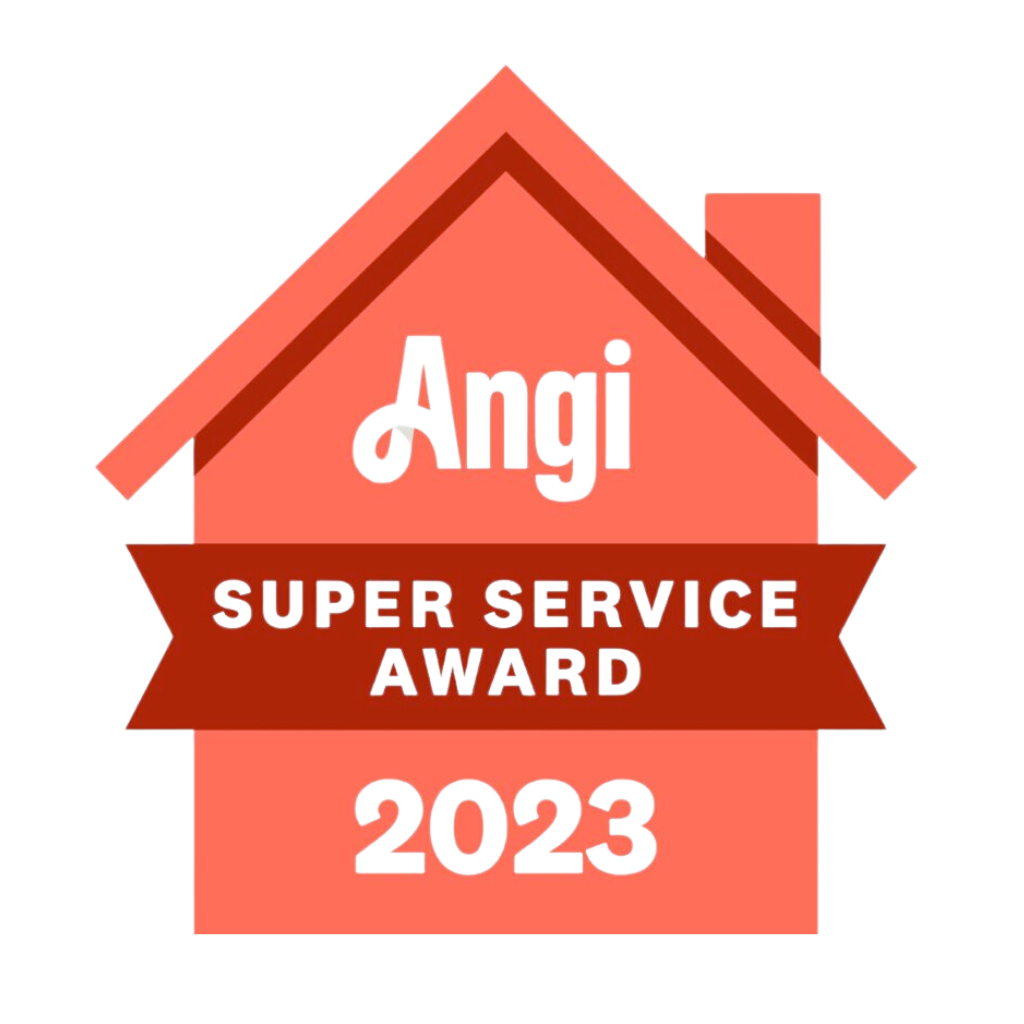Garbage disposals are a lifesaver in the kitchen, serving as a quick and easy way to get rid of food scraps and other waste without generating a ton of trash to take out. With the holidays coming up and all the cooking we are going to be doing, you want to make sure your garbage disposal works but also know who to call if it stops working.
It’s important to know the reasons why your garbage disposal isn’t working and the signs and symptoms to look for. You want to ensure the power is always off before working on it and that there aren’t any power issues. You also want to make sure people aren’t overloading or using the garbage disposal improperly.
Below, you will understand the 8 common causes of a garbage disposal not working and how each kitchen disposal issue can be solved.
Safety First – Before You Begin Troubleshooting
Disconnecting a garbage disposal safely involves careful preparation to avoid accidents and damage to your plumbing or electrical system. Follow these steps:
Tools You’ll Need:
- Screwdriver
- Adjustable wrench or pliers
- Bucket or bowl
- Towel or rags
- Flashlight
- Hex wrench
Steps:
- Turn off power.
- Prepare the area.
- Disconnect the drainpipe.
- Disconnect the dishwasher hose (if applicable).
- Remove the disposal unit.
- Disconnect the wiring (if hardwired).
8 Reasons Why Your Garbage Disposal Isn’t Working (With Solutions)

A malfunctioning garbage disposal can be frustrating, but understanding the potential causes can help diagnose the problem and work toward fixing your broken disposal. Here are 8 common reasons your garbage disposal might not be working.
1. Power Issues
Problem: The disposal won’t turn on at all.
Cause: A tripped circuit breaker, a faulty wall switch, or the unit’s reset button has been triggered.
Solution: Check your circuit breaker and press the reset button on the bottom of the unit.
2. Overloaded Disposal
Problem: Too much food waste being processed at once.
Cause:
- Excessive Food Waste: Adding too much food at once overwhelms the disposal’s grinding mechanism.
- Fibrous or Hard Materials: Items like celery, potato peels, bones, or fruit pits can jam the blades.
- Lack of Running Water: Not running enough cold water while using the disposal prevents food waste from flushing through the system.
- Old or Worn-Out Motor: An older motor may overheat more easily when faced with heavy loads.
Solution:
- Turn off power for safety.
- Clear out excess waste.
- Check for jams.
- Reset the overload protector.
- Restore power and test.
3. Jammed Blades
Problem: The motor hums, but the blades won’t spin.
Cause: Hard objects (like bones, utensils, or pits) can jam the blades.
Solution: Turn off the disposal and use a wrench or hex key (usually included with your unit) to rotate the blades from the bottom manually.
4. Dull Blades or Worn Mechanism
Problem: Food isn’t grinding correctly.
Cause: The blades can become dull or worn out over time, reducing the unit’s effectiveness.
Solution: Sharpen the blades or replace the unit if the disposal is old.
5. Clogged Drain Line
Problem: Water backs up into the sink or drain slowly.
Cause: Food particles, grease, or debris can clog the pipe connected to the disposal.
Solution: Use a plunger or snake to clear the clog. Avoid using chemical drain cleaners as they can damage the disposal.
6. Improper Waste Disposal
Problem: Improper waste disposal can lead to clogs, jams, odors, or even damage your plumbing system.
Cause:
- Non-Food Items: Objects like utensils, plastic, or paper accidentally dropped into the disposal can damage the blades or jam the mechanism.
- Hard or Fibrous Foods: Foods like bone, fruit pits, celery, corn husks, or potato peels can strain the motor or jam the blades.
- Grease and Fat: Grease and fat solidify as they cool, leading to clogs in the pipes.
- Overloading: Adding too much food waste at once can overwhelm the disposal, causing it to shut down or clog.
- Improper Use: Running more water during and after use prevents food waste from flushing through the system, leading to buildup.
Solution: - Remove problematic items: Turn off the power to the garbage disposal and use tongs or pliers to remove non-food items or large pieces of debris.
- Clear clogs: If the disposal is jammed, use an Allen wrench to rotate the flywheel manually via the hex hole on the bottom of the unit.
- Flush the system: Run cold water for 30-60 seconds to help flush any residual waste or grease buildup in the pipes.
- Reset the unit: If the disposal isn’t functioning after clearing, press the reset button on the bottom to restore power.
- Clean the disposal: Eliminate odors and buildup by grinding ice cubes and citrus peels or by using a baking soda and vinegar solution.
7. Motor Overheating
Problem: The disposal shuts off mid-use.
Cause: Overloading the disposal with too much waste or fibrous materials can trip the overload protector.
Solution: Clear the chamber, wait 10 minutes for the motor to cool, then press the reset button.
8. Aging Disposal Unit
Problem: The disposal frequently breaks down or doesn’t work consistently.
Cause: The unit may be outdated or nearing the end of its lifespan (typically 8-15 years).
Solution: Replace the unit with a newer, more efficient model.
DIY Fixes vs. Professional Help
When your garbage disposal isn’t working, you may wonder whether to try DIY fixes or call a professional. Here’s a comparison to help you decide:
DIY Garbage Disposal Fixes:
- The Disposal Doesn’t Turn On:
- DIY Solution – Press the reset button on the bottom of the disposal. Check your circuit breaker and restore power.
- Humming Sounds but Blades Don’t Spin:
- DIY Solution – Turn off the power, use an Allen wrench to manually rotate the flywheel via the hex hole at the bottom of the unit, and remove any visible obstructions with tongs.
- Draining Slowly or Water Backed Up
- DIY Solution – Use a plunger or clean the P-trap to remove debris. Avoid chemical cleaners, as they can damage the disposal.
- DIY Solution – Use a plunger or clean the P-trap to remove debris. Avoid chemical cleaners, as they can damage the disposal.
Professional Plumber Help:
- Disposal Still Doesn’t Work After Reset – A plumber or electrician can diagnose and repair motor or electrical issues. Replacement may be needed if the motor is dead.
- Persistent Clogs in the Drain Line – A plumber can use specialized tools like hydro-jetting or an auger to clear clogs without damaging pipes.
- Unusual Noises or Burning Smell – A professional can inspect the blades, motor, and electrical connections to repair or replace damaged components.
- Leaking Disposal – A plumber can replace seals and gaskets. If the unit is cracked, they’ll recommend and install a new one.
- Old or Malfunctioning Unit – A professional can recommend and install a new disposal model with better efficiency and durability.
Calling a professional for a plumbing issue is never a bad idea. You don’t want to make the problem worse if you don’t know what you are doing. Logan Services has a team of trained experts who can help you with all your plumbing needs and questions.
Broken Garbage Disposal FAQs
How do I reset my garbage disposal?
- Turn Off the Power: Make sure the garbage disposal is turned off. Flip the wall switch to the “off” position to prevent accidental activation.
- Check for a Tripped Breaker: If the disposal won’t turn on, check your home’s circuit breaker panel to see if the breaker for the disposal has tripped. Reset if necessary.
- Locate the Reset Button: Find the reset button on the bottom of the garbage disposal unit. It’s usually a small red or black button located near the base.
- Press the Reset Button: Press the reset button firmly. If it has popped out, this action will push it back in place. You may hear or feel a slight click.
- Manually Rotate the Blades (if Necessary): If the disposal is jammed, use an Allen wrench (or hex key) to rotate the motor shaft manually. Insert the wrench into the hole on the bottom center of the unit and turn it back and forth to dislodge the jam.
- Clear the Disposal Chamber: If there’s debris inside, remove it using tongs or pliers. Never use your hands to reach into the disposal.
- Turn the Power Back On: Restore power to the unit by flipping the wall switch or resetting the breaker if necessary.
- Test the Disposal: Run cold water and turn the disposal back on. If it works, the reset was successful.
What should I do if my garbage disposal hums but doesn’t work?
- Turn Off the Power: Switch off the disposal at the wall or unplug it to prevent accidents.
- Check for Jams: The humming sound often indicates that the flywheel or blades are stuck. Use a flashlight to look inside the disposal for objects like bones, utensils, or food debris.
- Manually Rotate the Flywheel:
- Find the hex hole at the center bottom of the unit (underneath the garbage disposal).
- Insert an Allen wrench (or hex key into the hole and turn it back and forth to free the jammed flywheel manually.
- If your disposal doesn’t have a hex hole, use a wooden spoon handle to rotate the blades inside the chamber gently.
- Remove Any Obstructions: Use tongs or pliers to remove visible debris from the disposal chamber. Never put your hand inside the disposal!
- Reset the Garbage Disposal: Press the reset button located at the bottom of the unit. If the reset button has popped out, push it back in.
- Restore Power: Plug the disposal back in or flip the wall switch to restore power.
- Test the Disposal: Turn on the disposal while running cold water. If it runs without humming, the problem is resolved.
How long does a garbage disposal typically last?
A garbage disposal typically lasts 8-15 years, depending on factors such as the quality of the unit, how often it’s used, and how well it’s maintained.
How Logan Services Can Help
From power issues and jammed blades to clogs and worn-out parts, understanding the possible causes of a trash compactor that’s not working can help you diagnose the problem and decide whether to try a quick DIY fix or call a professional.
Remember, regular maintenance – like running cold water during use, avoiding fibrous or hard items, and cleaning the unit periodically – can extend your garbage disposal’s lifespan and keep it running smoothly. If the issue persists or you’re unsure how to fix it safely, don’t hesitate to reach out for expert assistance. The skilled technicians at Logan Services can quickly diagnose and repair your garbage disposal, ensuring your kitchen is back in action in no time. Schedule your next plumbing appointment by contacting us today! Our team is ready to help you.





















